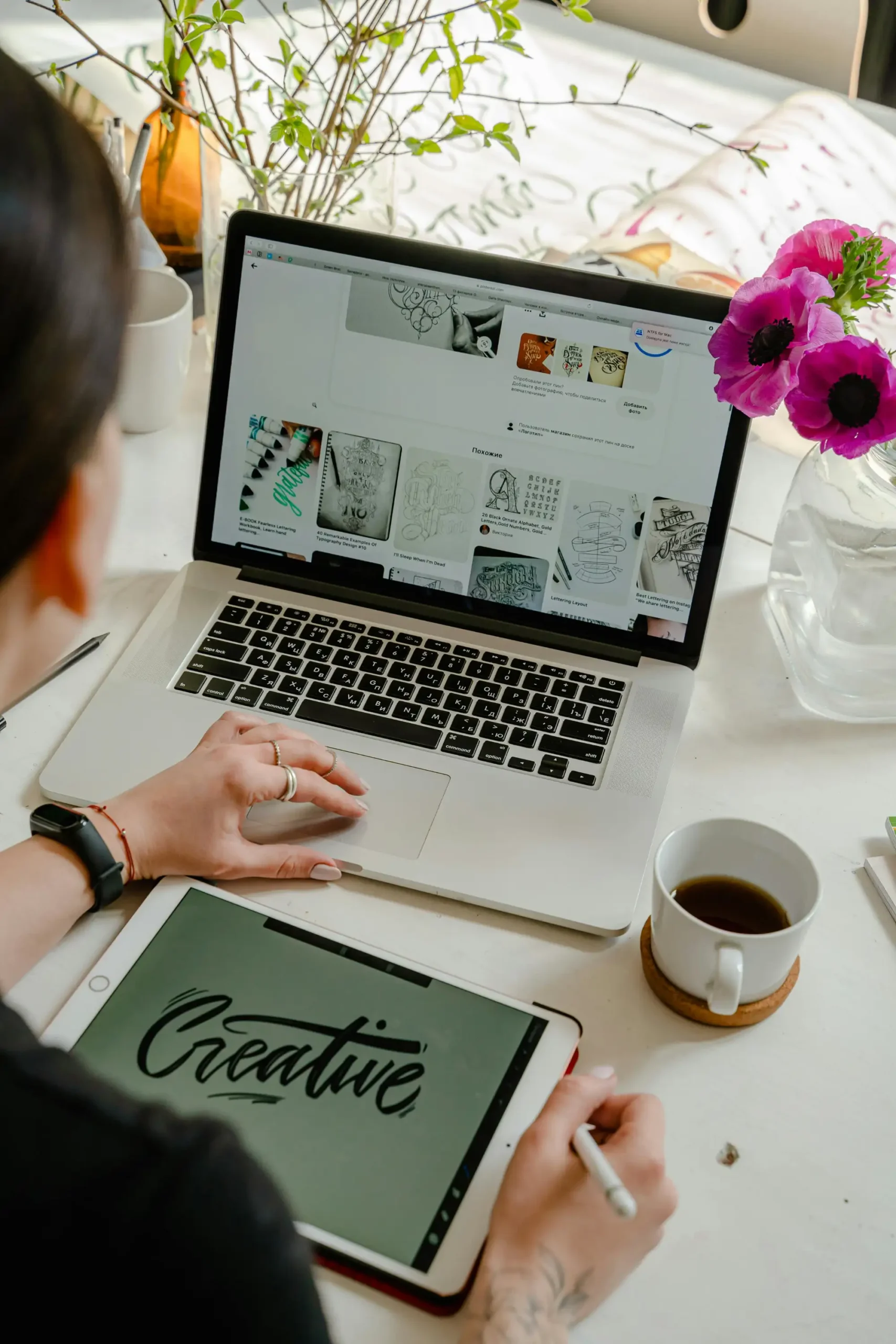Whether you’re an aspiring designer or an experienced professional looking to refine your craft, visual design skills are essential in today’s digital landscape. From creating engaging user interfaces to building compelling branding materials, these skills can make a significant impact. Here are some of the best ways to improve your visual design skills:
Study Design Fundamentals
Before diving into complex design projects, it’s essential to understand the basics. This includes principles like typography, color theory, balance, contrast, hierarchy, and alignment. These fundamentals provide the building blocks for any successful design.
- Typography: Learn about font pairing, spacing, and readability. Different typefaces communicate different emotions and purposes.
- Color Theory: Understanding how colors work together and their psychological impact can help create cohesive and appealing designs.
- Composition and Layout: Practice creating balanced compositions with grids and understanding how elements can be positioned to create visual interest.
Practice Consistently
Improving visual design skills requires consistent practice. Commit to designing something new every day, whether it’s a small icon, a poster, or a UI component. Practicing daily helps reinforce skills, develop a unique style, and improve your ability to work efficiently.
- Design Challenges: Platforms like Dribbble or Behance offer daily or weekly design challenges that can help keep your skills sharp.
- Create Side Projects: Work on personal projects or collaborate with others to create real-world designs that build your portfolio.
Learn from Other Designers
Observing and analyzing the work of successful designers can provide insights into what makes a design effective. Follow design accounts on social media, study portfolios on platforms like Behance and Dribbble, and read design blogs.
- Analyze Designs: Pay attention to how color, typography, and layout are used in professional designs. Ask yourself what makes these designs appealing and effective.
- Engage with the Community: Joining online design communities or forums can provide inspiration, feedback, and learning opportunities from other professionals.
Master Design Software
Learning how to use design software efficiently is crucial for turning your ideas into reality. Familiarize yourself with industry-standard tools like Adobe Photoshop, Illustrator, Figma, or Sketch. These programs offer a range of functionalities that are essential for creating professional-level designs.
- Take Tutorials: Platforms like Udemy, Coursera, or YouTube have tutorials on everything from basic functions to advanced techniques.
- Experiment with Tools: Explore different tools within each software to understand their potential and find new ways to enhance your designs.
Understand UI/UX Principles
Visual design isn’t just about making things look pretty; it’s also about creating functional and user-friendly experiences. Learning the principles of User Interface (UI) and User Experience (UX) design will help you create designs that are both aesthetically pleasing and practical.
- Wireframing and Prototyping: Practice creating wireframes to establish the structure of a design before diving into the details. Tools like Figma and Adobe XD are great for this.
- User Testing: Gather feedback from users to understand how they interact with your designs and make improvements based on their experience.
Seek Feedback and Critique
One of the best ways to improve is to seek constructive feedback from other designers or users. Critiques can reveal areas for improvement that you might have missed and offer alternative perspectives.
- Join Design Groups: Platforms like Reddit (r/DesignCritiques) or Facebook groups offer communities where you can post your work and receive feedback.
- Work with a Mentor: Finding a mentor in the design field can provide personalized guidance and professional insights to help you grow faster.
Stay Updated with Design Trends
The design industry is constantly evolving, with new trends and techniques emerging regularly. Staying updated with these trends can help you stay relevant and keep your work fresh.
- Follow Design Blogs and Magazines: Websites like Awwwards, Smashing Magazine, and Creative Bloq often showcase the latest design trends and inspiration.
- Attend Webinars and Conferences: Participating in online or offline design conferences can provide insights into industry trends and allow you to network with other professionals.
Build a Strong Portfolio
Your portfolio is a showcase of your design skills and a crucial tool for getting jobs or freelance work. Ensure that it reflects a wide range of your abilities and showcases your unique style.
- Include Personal Projects: Don’t just rely on client work; showcase personal or conceptual projects that demonstrate your creative process and problem-solving skills.
- Highlight the Process: Employers and clients appreciate seeing the thought process behind designs. Include sketches, wireframes, and other elements that showcase your workflow.
Experiment with Different Design Styles
Exploring various design styles, such as minimalism, flat design, or retro aesthetics, can help you become more versatile. By trying different styles, you’ll learn new techniques and develop an eye for what works best in different contexts.
- Create Style Boards: Use platforms like Pinterest to curate mood boards and study various design aesthetics.
- Redesign Existing Work: Take inspiration from existing designs and reimagine them in different styles to challenge your creativity.
Be Open to Inspiration from Other Art Forms
Visual design draws inspiration from various forms of art, including architecture, painting, photography, and fashion. Exploring these fields can provide fresh perspectives and ideas that can be applied to your design work.
- Visit Art Exhibitions: Observing art in galleries or museums can stimulate your creative thinking and inspire you to incorporate new elements into your designs.
- Study Photography: Understanding how photographers use composition, light, and color can help you apply similar principles to your visual designs.
Conclusion
Improving your visual design skills is a continuous journey that requires dedication, practice, and a willingness to learn. By focusing on the fundamentals, practicing consistently, seeking feedback, and staying up-to-date with industry trends, you can develop your design abilities and create work that is not only visually appealing but also impactful.

Comments
One response to “How to Sharpen and Develop Your Visual Design Skills”
Hi, this is a comment.
To get started with moderating, editing, and deleting comments, please visit the Comments screen in the dashboard.
Commenter avatars come from Gravatar.